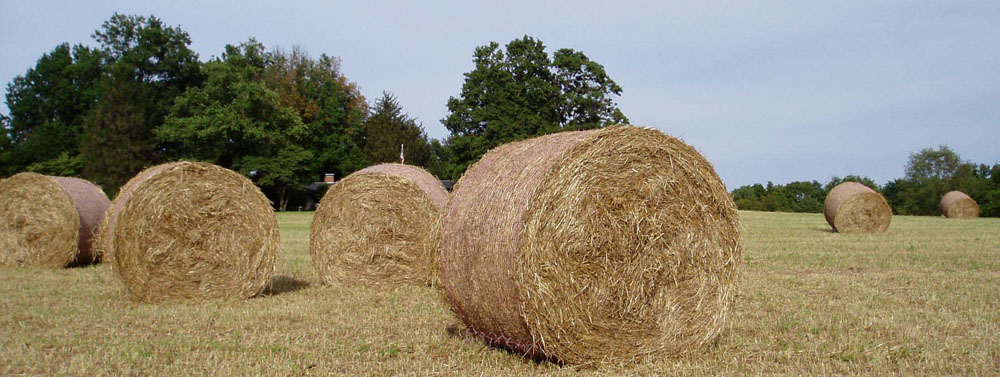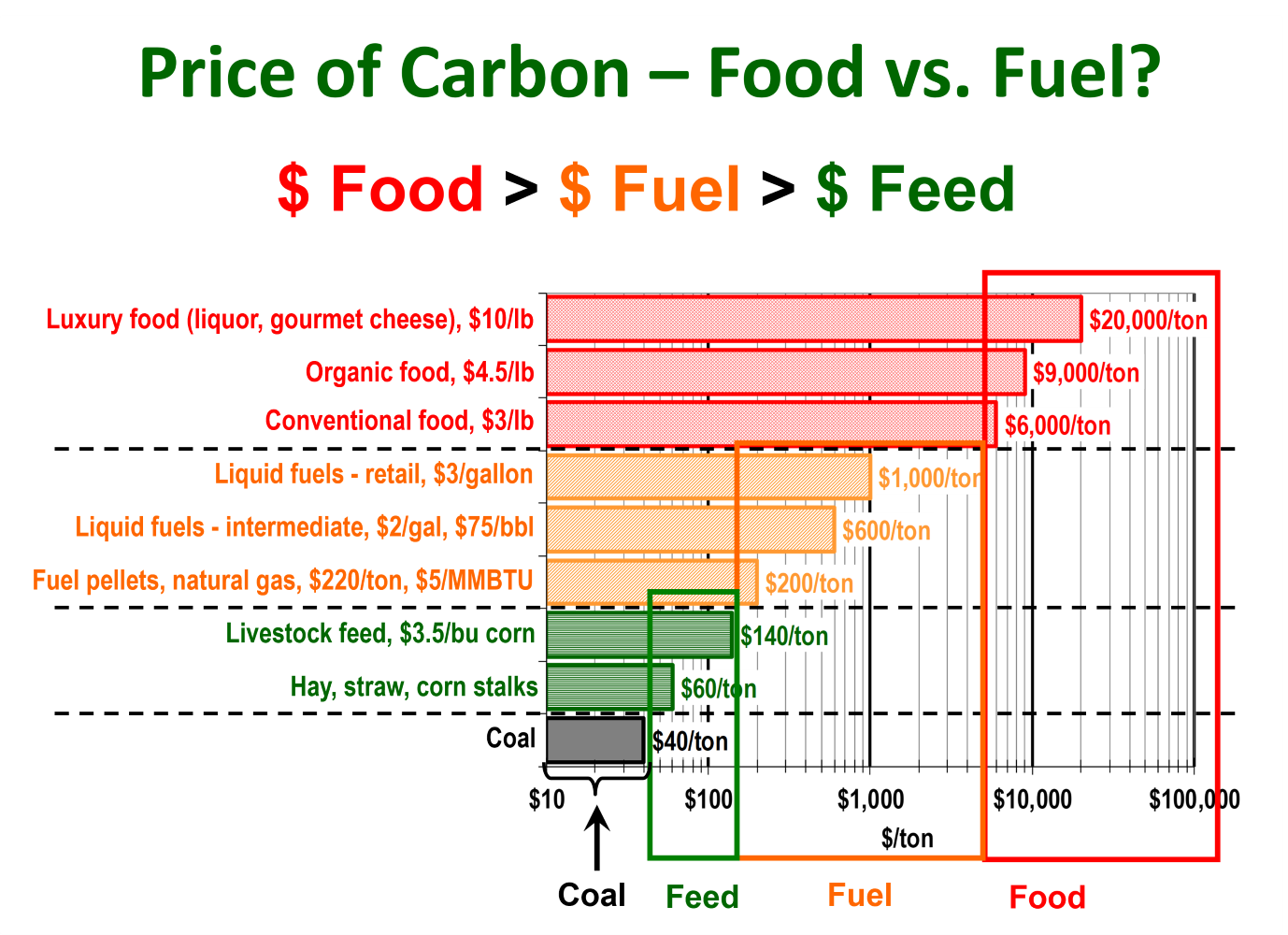The Price of Food Dominates Alternative Use Markets
This chart was created in 2011 to illustrate the US. price of fuel relative to the US. price of food. The debate back in those days was whether to produce food or fuel (food vs. fuel). It was the politics of change, but a worthy aspect to understand.
First, this chart has endured and made the cut in images that still define biomass markets in the photos that cycle through biomassrules.com on the home page. It puts a handful of food, fuel, and livestock feed items on a common scale of $/ton. We do not buy food in tons. But in examining metrics that can compare these disparate items, $/ton is as ‘common’ as it comes.
Food is used to fuel our biological lives. Livestock feed is used to provide energy for the growth of animals that in most cases, become future food. Transportation fuels power our mechanical vehicles. It is innocent, but makes a point that the price per unit of food has more value than the price per unit of fuel, which has more value than the price of livestock feed.
The Take Home Message
Our agricultural and biomass production is larger than food. Food values dominate everything else. Value chains put retail prices much higher than the commodity production prices. Comparing the price of soybean oil (historically food) with soybean meal (historically livestock feed), soybean oil is 2 to 4 times more valuable on a weight basis, USDA, ERS, Oil Crops Yearbook. As demand for all uses of vegetable oil increases, the value also increases.
Not included in these prices are the values of reuse. Used vegetable oils are taking on increasing function in the biofuel debates. They have historically lower prices than livestock feed.
A little More Complicated
It turns out that on a global scale, the US. expansion into biofuels twenty years ago did raise the price of food around the world. Patrick Westhoff does a masterful job weaving the complex interactions in his, The Economics of Food: How Feeding and Fueling the Planet Affects Food Prices (2010, Pearson). It was required reading in the Greenville University, agribusiness program. Substitution effects from the US. using number 2, yellow corn, domestically, plus droughts and floods, and wealth differences between economies all played a role in changing the price of food.
Also Just Unbelievable
Biomass Rules, LLC kept track of various products every week for more than five years. This chart was put together from prices in December of 2011. Today, after the last 4 years of roller-coaster inflation, and food and energy price fluctuations, in June 2024, the fuel and feed prices are nearly the same. The food prices in this chart are not pointing to any one food, so comparable food values today are likely much higher. But, after 13 years, the current fuel and energy prices may be 25 percent higher, (2 percent or less annual increase). Even coal is still relatively inexpensive as a fuel these days.
Biomass prices are complex and fascinating. But unpacking all the bits is worth the effort.



Comments
The Price of Food Dominates Alternative Use Markets — No Comments
HTML tags allowed in your comment: <a href="" title=""> <abbr title=""> <acronym title=""> <b> <blockquote cite=""> <cite> <code> <del datetime=""> <em> <i> <q cite=""> <s> <strike> <strong>